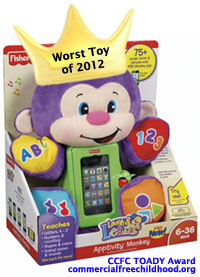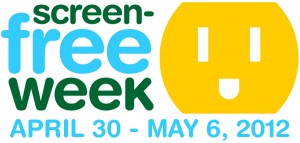Before You Download that “Educational” App for Your Baby
Posted on August 10, 2013 at 3:59 pm
The Campaign for a Commercial-Free Childhood has filed a complaint with the Federal Trade Commission charging that “educational” apps for babies do not have any documented value. This is the same group that made the charges against Baby Einstein that led to a settlement that had Disney offering refunds to consumers who relied on their claims that the DVDs were beneficial to babies. CCFC says:
The false and deceptive marketing by Fisher-Price and Open Solutions creates the impression that their apps effectively educate infants when time with tablets and smart phones is actually the last thing babies need for optimal learning and development. Both companies claim that their mobile apps will teach babies skills and information-including words and numbers- but neither company offers any evidence to back up their claims. To date, not a single credible scientific study has shown that babies can acquire language or math skills from interacting with screens. In addition, screen time may be harmful for babies. Research links infant screen time to sleep disturbances and delayed language acquisition, as well as problems in later childhood, such as poor school performance and childhood obesity. The American Academy of Pediatrics recommends discouraging screen time for children under two.
In their cover letter, CCFC notes that “According to a 2012 report by the Joan Ganz Cooney Center, over 80% of the top-selling apps in the “Education” category of the iTunes’ App Store target children. Sixty percent of the top 25 apps target toddlers and preschool children—more than double the percentage that target adults.”
The companies charged are Fisher-Price and Open Solutions, whose apps like “Laugh and Learn” purport to teach babies counting, words, or motor skills. Studies show that babies learn far more effectively from interaction with people than they do from machines. To add your name to the complaint against companies making unsubstantiated claims that their products benefit babies, visit the CCFC site.


